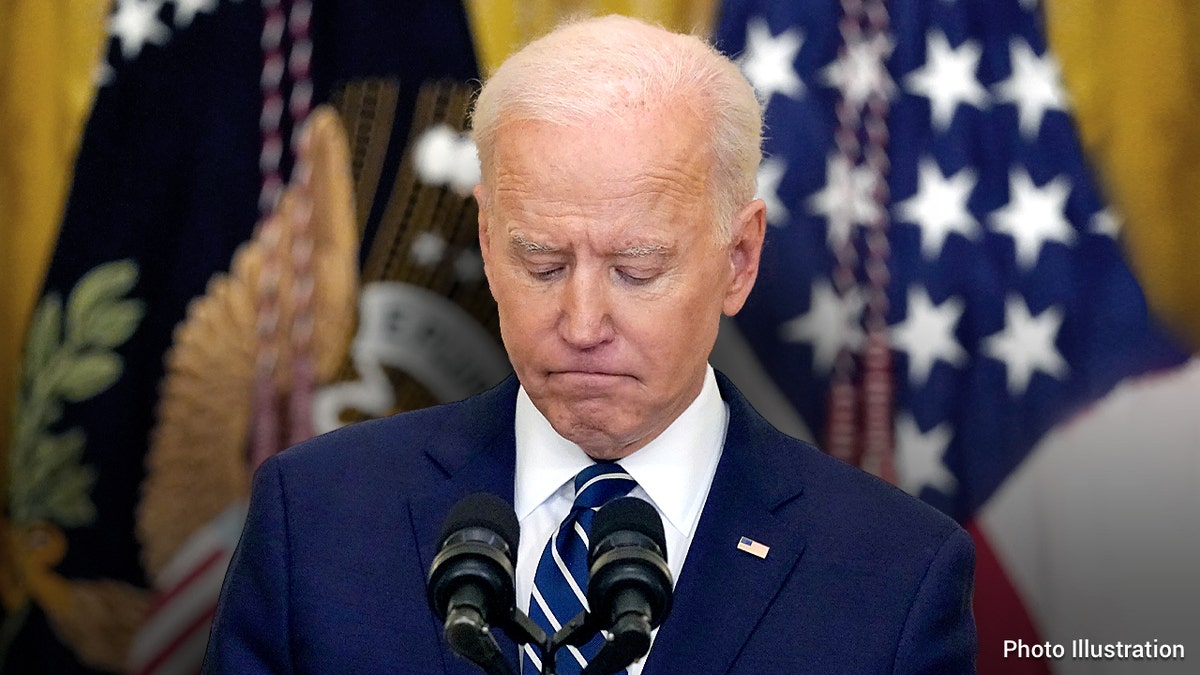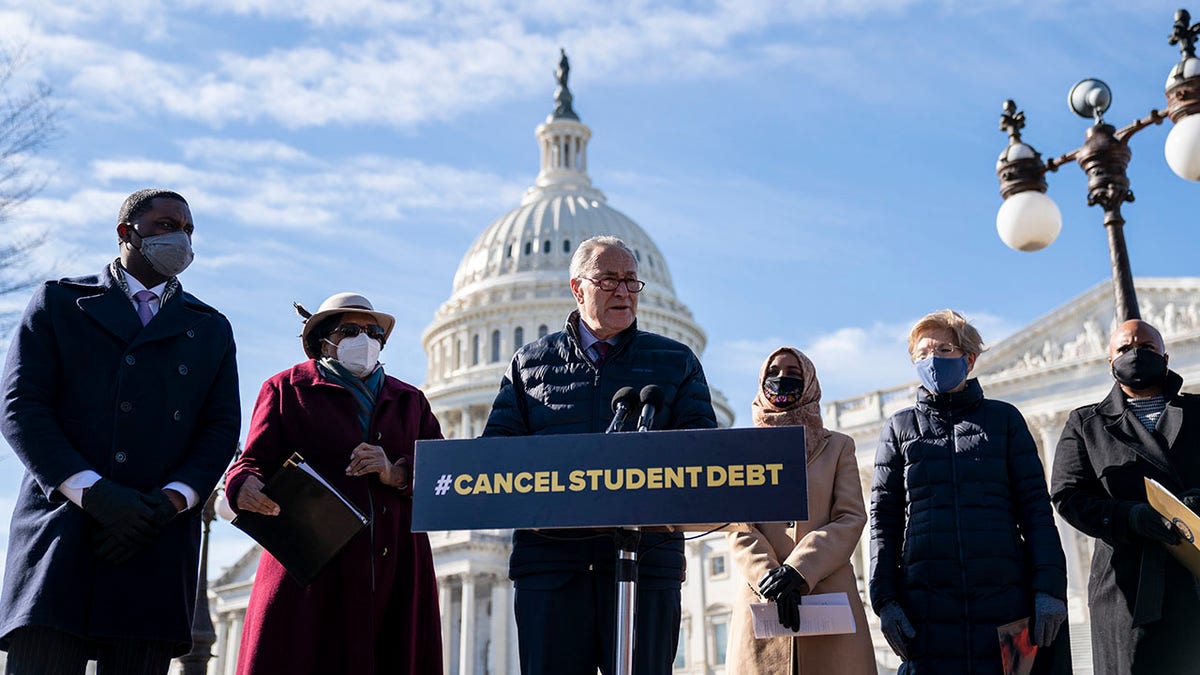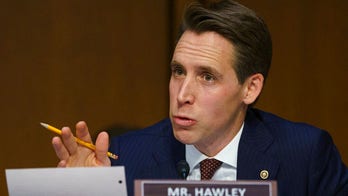Loan adviser warns Biden's debt handouts could take 'months'
Fox News' Mark Meredith reports on the logistical issues in rolling out Biden's student loan handout.
The White House remains mum on how it plans to pay for President Biden's decision to cancel between $10,000 to $20,000 in student debt for some Americans or if future tax hikes will be needed to cover the proposal which, by some estimates, costs more than $500 billion.
Despite unveiling the policy earlier this week, administration officials have yet to clarify how the proposal will be paid for in the long term. Since the current plan calls for the government to forgive the debt, that means taxpayers are likely on the hook for much of the principal and interest is dumped on top of the nearly $31 trillion in existing U.S. debt.
Fox News Digital has reached out to the White House multiple times inquiring how the Biden administration plans to pay for the student loan handout or whether it was eyeing future tax hikes to pay for it. On Sunday, a spokesperson responded by pointing to comments by Bharat Ramamurti, deputy director of the National Economic Council, who claimed Friday that the plan is "fully paid for" through deficit reduction.
"It is paid for and far more by the amount of deficit reduction that we’re already on track for this year," Ramamurti said. "Like I said, we’re on track for $1.7 trillion in deficit reduction this year. That means, practically speaking, compared to the previous year, 1.7 trillion more dollars are coming into the Treasury than are going out. And we’re using a portion of that — a very small portion of it — to provide relief to middle-class families, consistent with the President’s plan."
NEARLY 100 REPUBLICANS DEMAND PELOSI HOLD BIDEN ACCOUNTABLE FOR $500B STUDENT DEBT HANDOUT

Biden announced Wednesday plans to forgive $10,000 in student debt for borrowers making less than $125,000 annually. (AP Newsroom)
Administration officials, while not addressing how the added spending will be offset, have argued in recent days that the national deficit is already plunging under Biden's watch.
Administration officials have also claimed that the cost of Biden's student loan handout cannot be fully accounted for since it's unclear how many borrowers will opt to take advantage of the opportunity. They say that it remains unclear how many individuals would have paid back the full amount of their loans over time anyway.
"All of this as when it comes to costs will also depend on how many of the loans canceled were actually expected to be repaid," said Jean-Pierre.
DEMOCRATS OPPOSED TO BIDEN STUDENT LOAN HANDOUT PREVIOUSLY SUPPORTED SEPARATE DEBT CANCELLATION BILL
The National Taxpayers Union Foundation disagrees, however. The group issued an analysis earlier this week estimating that if the student loan handout adds nearly $330 billion to the deficit over the next decade, as a budget model by the University of Pennsylvania's Wharton School of Business asserts, the average cost per taxpayer will be $2,085. But that could be on the low end. The Committee for a Responsible Budget puts the cost of the handouts at between $440 billion and $600 billion.
The fiscally conservative think tank, in particular, says the federal government will need to figure out a way in the future to make up for the forgiven loans, whether it be spending cuts or tax hikes. Much of it, the group predicts, will be via the latter.

People rally in front of The White House to celebrate President Biden canceling student debt, Aug. 25, 2022. (Paul Morigi/Getty Images for We the 45m)
When broken down, the data showed the sum to be significantly more for higher income brackets but still sock it to the middle class.
For instance, according to the group, taxpayers making between $1 and $50,000 annually would pay more than $158. The cost for those making between $50,000 and $75,000 is estimated to be $866, and $1,477 for individuals making $75,000 and $100,000, while those making between $100,000 and $200,000 would face costs upwards of $3,150. Earners pulling down $200,000 to $500,000 would pay nearly $9,950.
"Some may dispute that taxpayers bear the cost of canceling student debt. But the $329 billion cost of student debt cancellation would be $329 billion previously borrowed from the federal government and not returning to the Treasury," the organization's analysis states. "Policymakers will need to make up for that gap in the future with government spending cuts, tax increases, more borrowing, or some combination thereof."

Democrats argue the national deficit is already plunging under Biden's watch. (Drew Angerer/Getty Images)
Biden announced Wednesday plans to forgive $10,000 in student debt for borrowers making less than $125,000 annually. Pell Grant recipients will receive $20,000 in debt handouts, provided their income is below the $125,000 threshold. Administration officials claim that no individual or household in the top 5% of earners will benefit from the decision.
The White House is also extending a pause on student loan payments through the end of the year. Coinciding with the announcement is a new Education Department proposal that allows borrowers to cap undergraduate loan repayment at 5% of their monthly income, adding to the cost to taxpayers of the handout.
CLICK HERE TO GET THE FOX NEWS APP
Penn Wharton's budget model estimates the total cost of the proposal, when accounting for loan forbearance and the new repayment cap, could be more than $1 trillion.
Fox News' Jessica Chasmar contributed to this report.






